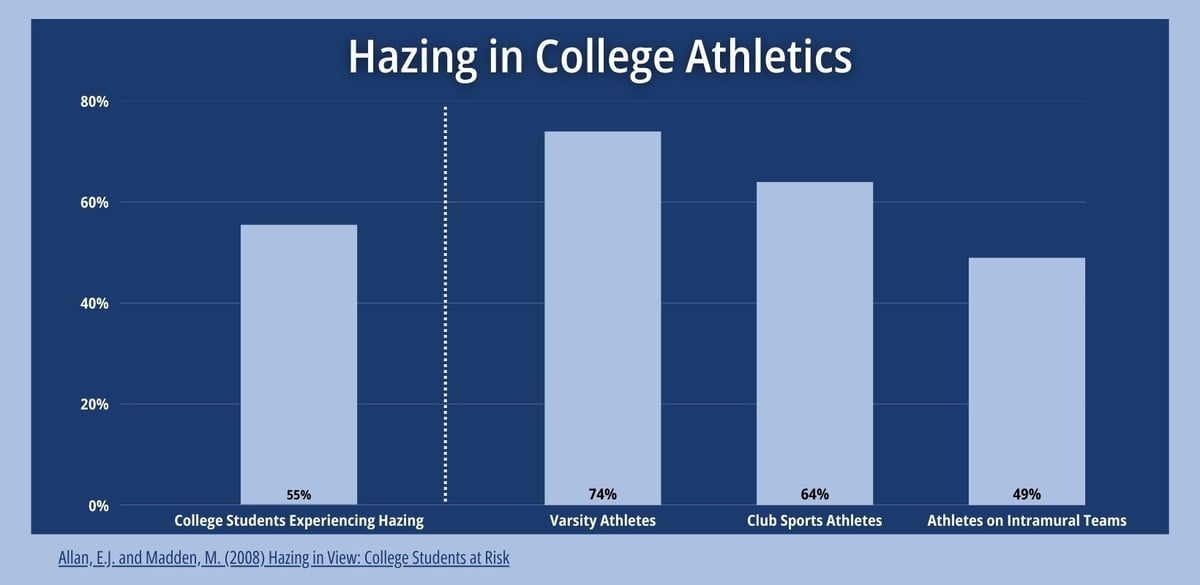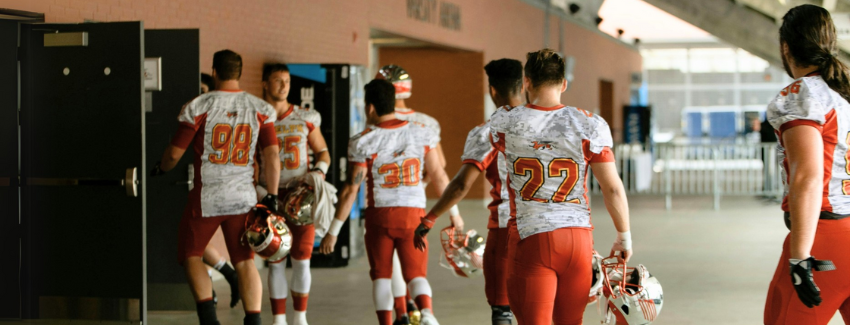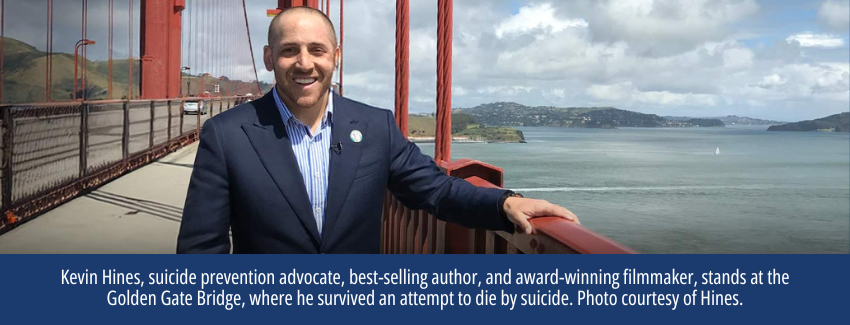How to end hazing in college sports
Recent scandals in college athletics highlight an urgent need to confront hazing and change the conversation about healthy team-building
Learn about hazing on your campus: Campus Lookup
***
New Mexico’s attorney general minced no words in December following a months-long investigation into the New Mexico State University (NMSU) men’s basketball program.
Sexualized hazing incidents in NMSU’s men’s basketball program in 2022-23 “revealed a toxic locker room culture, an absence of oversight by key Athletic Department personnel, and a systemic lack of priority given to hazing prevention measures,” Attorney General Raul Torrez said in a letter to the school’s president and board of regents.
It is the latest chapter in a string of recent hazing scandals involving college sports teams, including football programs at Northwestern University and the University of San Diego, men’s and women’s swimming teams at Boston College, and the women’s ice hockey program at Harvard University.
The headline-grabbing incidents we read about are likely the tip of the iceberg, said Dave Kerschner, post-doctoral fellow for research and evaluation at the research organization StopHazing.org.
Hazing in college sports remains a significant and under-reported problem on college campuses, from varsity athletics to club sports.
Yet college athletes may also be the best ambassadors for hazing prevention on their campuses, Kerschner said.
“Their peers see them as role models and leaders on campus. As influencers with significant platforms for communication, they could help lead the way in talking about hazing prevention,” Kerschner said.
What we know about college sports hazing
The most recent data shows nearly three of every four varsity athletes experience at least one behavior that meets the definition of hazing.
Common hazing behaviors included participating in a drinking game (47%); drinking large amounts of a non-alcoholic beverage (24%) or large amounts of alcohol to the point of getting sick or passing out (23%); and being screamed, yelled, or cursed at by other members (21%).
Varsity athletes experience hazing at higher rates than their nonathlete peers, with athletes who participate in collision sports more likely to have experienced hazing than those in non-contact sports.
As a PhD student at the University of Maine, Kerschner led research into hazing in college athletics in NCAA Division III schools, the largest division of the NCAA. In 2021, he and his co-author, Elizabeth Allan, found that 41% of Division III athletes had been hazed compared to 25% of non-athletes in those institutions.
Athletes may see their coaches or athletic administrators as barriers to reporting hazing they experience, Kerschner said. In 25% of hazing experiences, athletes say coaches and/or advisers were aware of the activities, according to one study.
Meanwhile, coaches often think hazing prevention should be led by the athletes themselves.
“We know many coaches and administrators also experienced hazing themselves,” Kerschner said. “And many high school athletes experience hazing, which helps normalize hazing when they participate in college sports.”
Prioritizing hazing prevention in college sports
Too often, it takes a major public hazing incident on a college team to draw the attention of campus leaders.
Kerschner said many athletic departments are siloed, operating outside the structures and reporting lines set up for most campus safety professionals and health and wellness staff.
At smaller schools, staff that might focus on hazing prevention are often doing multiple jobs, leaving little time to prioritize prevention strategies.
“Still, some institutions are starting to take steps to react to and prevent” hazing in sports, Kerschner said.
For example, three of the four institutions involved in recent public scandals over athlete hazing have joined the Hazing Prevention Consortium, a three-year hazing prevention program for colleges and universities led by StopHazing.org.
The NMSU basketball hazing scandal also helped propel new anti-hazing legislation in New Mexico this year. It's one of six states that currently has no hazing laws.
Changing the conversation about sports hazing
Kerschner sees other reasons to be hopeful about eliminating hazing in college sports.
Recent research is uncovering effective strategies for changing the mindset of athletes about hazing. For example, many college athletes believe their peers support hazing as a team bonding experience at much higher levels than they actually do.
That creates opportunities to share messaging about social norms — think social media campaigns and posters in locker rooms — to help athletes recalibrate their thinking about the acceptability of hazing, Kerschner said.
A recent study Kerschner led found that club sport athletes who watched an anti-hazing documentary reported a significant shift in their attitudes toward hazing and an increased willingness and confidence to intervene when they see hazing.
An update of the landmark 2008 National Study of Student Hazing will also dive more deeply into the issue, including examining the prevalence of hazing in specific sports.
Kerschner hopes that study will help pave the way for additional research in this under-studied area, including studies of sports hazing in community colleges and junior colleges and how sports hazing in middle and high school impacts the college experience for athletes.





